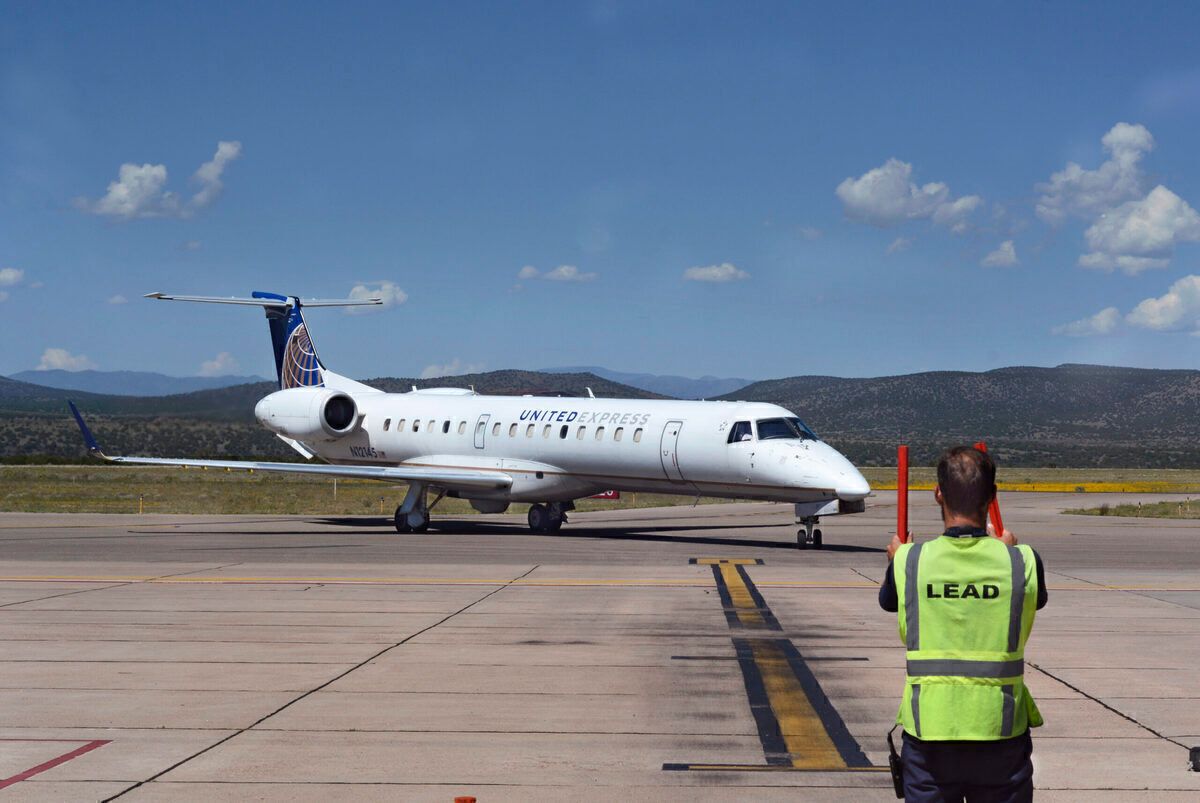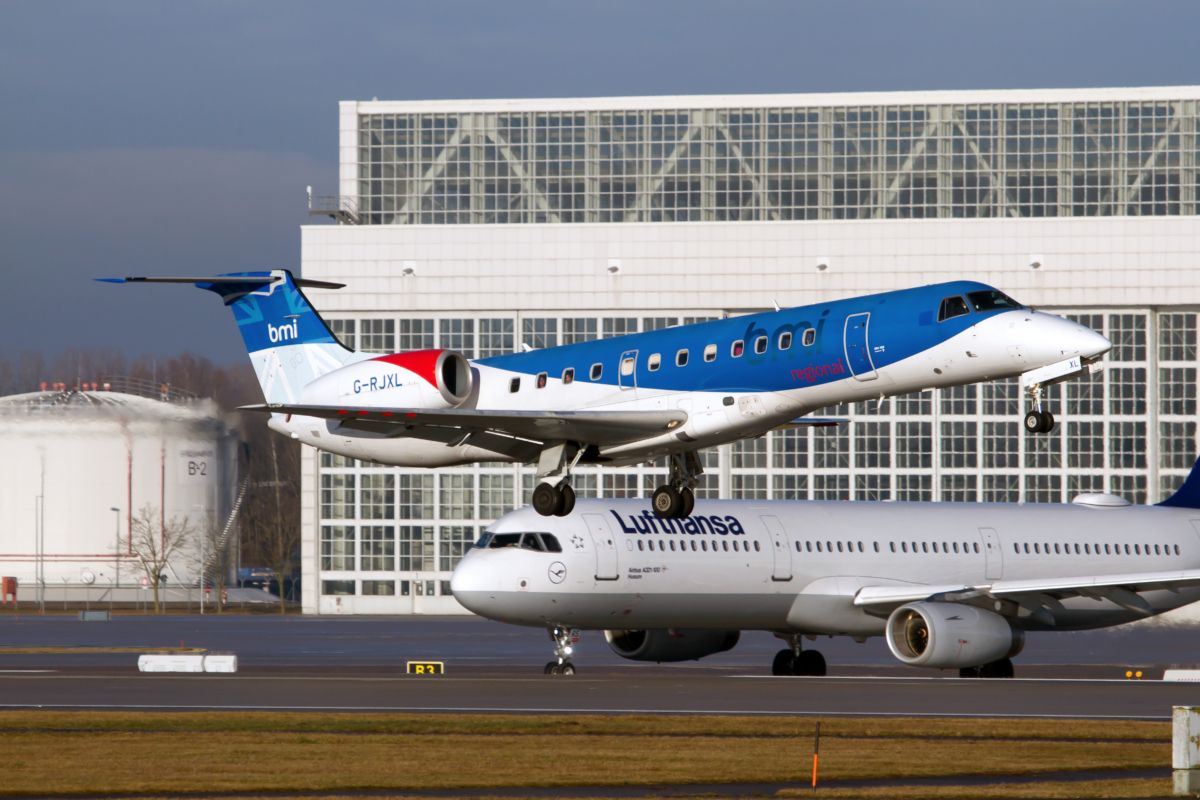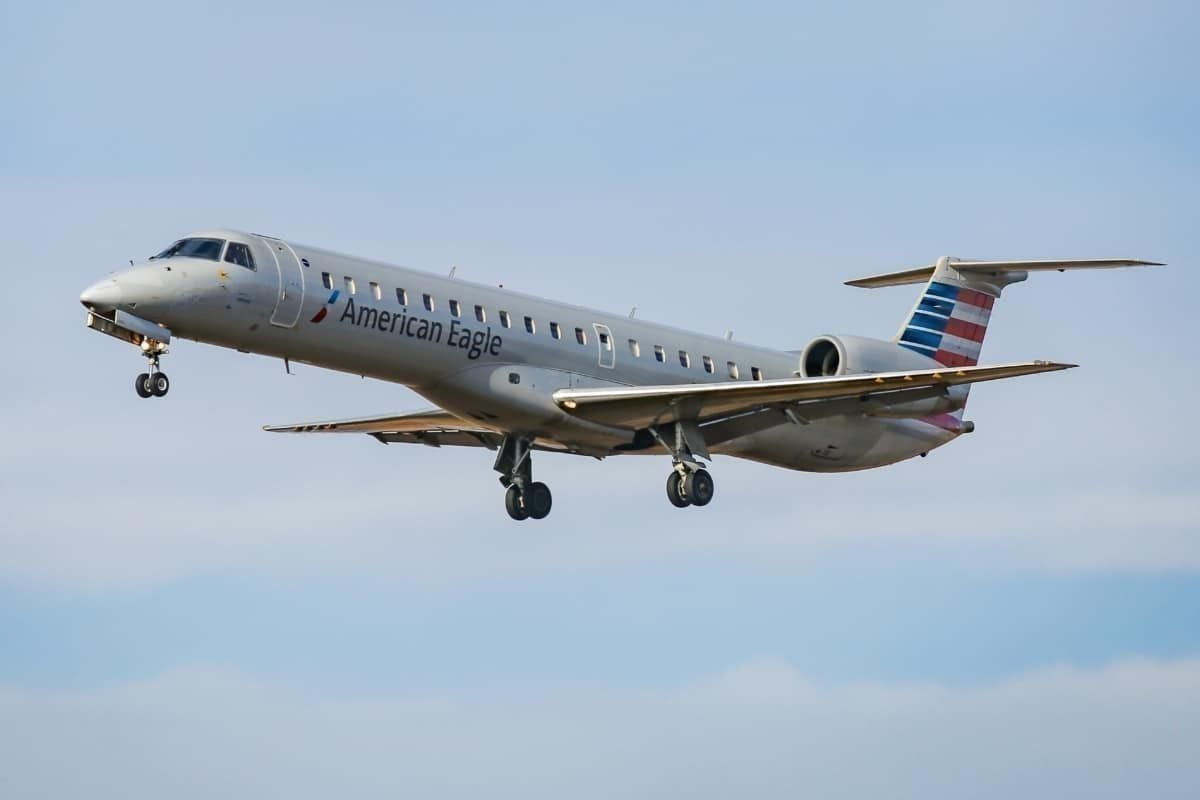Founded in 1969 in São José dos Campos, São Paulo, Brazil, Empresa Brasileira de Aeronáutica (Embraer) has grown to become the third-largest commercial aircraft manufacturer after Boeing and Airbus. With this in mind, we thought we would take a look at the Embraer ERJ-Jet family of aircraft and see how the planes differ from one another.
After noticing that Airbus and Boeing were concentrating on building larger planes, the Brazilian aerospace company saw a gap in the market for smaller regional jets. Designed for what Embraer perceived would be a new market for regional jet aircraft where speed and comfort would trump the fuel savings of turboprop planes, Embraer created the ERJ-family.
Stay informed: Sign up for our daily and weekly aviation news digests.
The engines moved to the rear
Given the name the EMB145, the first ERJ family flight took place on August 11, 1995. Over the next two years, changes were made that saw the plane's wing-mounted engines move to a rear-fuselage-mounted position. Based on its new ERJ145 design, Embraer re-introduced the plane in 1999 in three versions the ERJ135, ERJ140, and ERJ145. Each aircraft in the ERJ-family has a swept-back wing and is powered by two Rolls-Royce AE3007 turbofan engines.
ERJ135
Explicitly built for markets with low demand, the ERJ135 allows airlines to achieve the right balance between frequency and capacity. Rather than flying one or two flights a day with larger aircraft, the ERJ135 allowed airlines to offer more frequent flights at different times of the day. Doing this gave customers more options while allowing airlines to deploy larger planes on routes where the demand is more significant.
ERJ135 Specifications
The typical seat capacity is 30 seats with a 36-inch pitch or 32 seats with a 31-inch pitch.
Weights & Payload
- Maximum Takeoff Weight = 20,000 kg / 44,092 lb
- Maximum Landing Weight = 18,500 kg / 40,785 lb
- Maximum Payload = 4,499 kg / 9,918 lb
- Maximum Usable Fuel = 5,136 kg / 11,322 lb (6,396 l / 1,690 gal)
Performance
- Max Cruise Speed = M 0.78
- Time to Climb to FL350 = 15 minutes
- Takeoff Field Length = 1,330 m / 4,364 ft
- Landing Field Length = 1,360 m / 4,462 ft
- Service Ceiling = 37,000 ft
- Range = 1,750 NM / 3,243 km
ERJ140
Offering the same operating efficiencies as the ERJ35, the ERJ140 offers airlines an increased seat capacity while offering the same comfort and range.
ERJ-140 Specifications
The typical seat capacity of the ERJ-140 is 44 seats with a 31-inch pitch.
Weights & Payload
- Maximum Takeoff Weight = 21,100 kg / 46,517 lb
- Maximum Landing Weight = 18,700 kg / 41,226 lb
- Maximum Payload = 5,292 kg / 11,666 lb
- Maximum Usable Fuel= 5,136 kg / 11,322 lb (6,396 l / 1,690 gal
Performance
- Max Cruise Speed = M 0.78
- Time to Climb to FL350 = 6 minutes
- Takeoff Field Length = 1,270 m / 4,167 ft
- Landing Field Length = 1,380 m / 4,528 ft
- Service Ceiling = 37,000 ft
- Range = 1,650 NM / 3,058 km
Stay informed: Sign up for our daily and weekly aviation news digests.
ERJ145
Unveiled at the 1989 Paris Air Show, the ERJ145 is arguably the most popular member of the ERJ-family of jets. The ERJ145 is the largest model in the line-up with 50 seats. According to Embraer, the ERJ145 operates with 36 airlines in 26 counties and has more than 26 million flight hours.
ERJ-145 Specifications
Typically ERJ145s are configured with 50 seats that have a 31-inch pitch.
Weights & Payload
- Maximum Takeoff Weight = 22,000 kg / 48,501 lb
- Maximum Landing Weight = 19,300 kg / 42,549 lb
- Maximum Payload = 5,786 kg / 12,755 lb
- Maximum Usable Fuel = 5,136 kg / 11,322 lb (6,396 l / 1,690 gal
Performance
- Max Cruise Speed = M 0.78
- Time to Climb to FL350 = 18 min
- Takeoff Field Length = 1,380 m / 4,528 ft
- Landing Field Length = 1,400 m / 4,593 ft
- Service Ceiling = 37,000 ft
- Range = 1,550 NM / 2,873 km
In response to airlines asking for a regional jet that they could operate on longer no-stop routes, Embraer took its most popular ERJ jet and increased its range. Called the ERJ145XR, the plane can fly 2,000 nautical miles, an increase of 450 miles compared to the standard ERJ145. Production of the Embraer ERJ- family of jets ended in 2020 after 1,231 planes were built.
Have you ever flown on an Embraer ERJ-family jet? If so, please tell us what you like or dislike about the plane in the comments.



